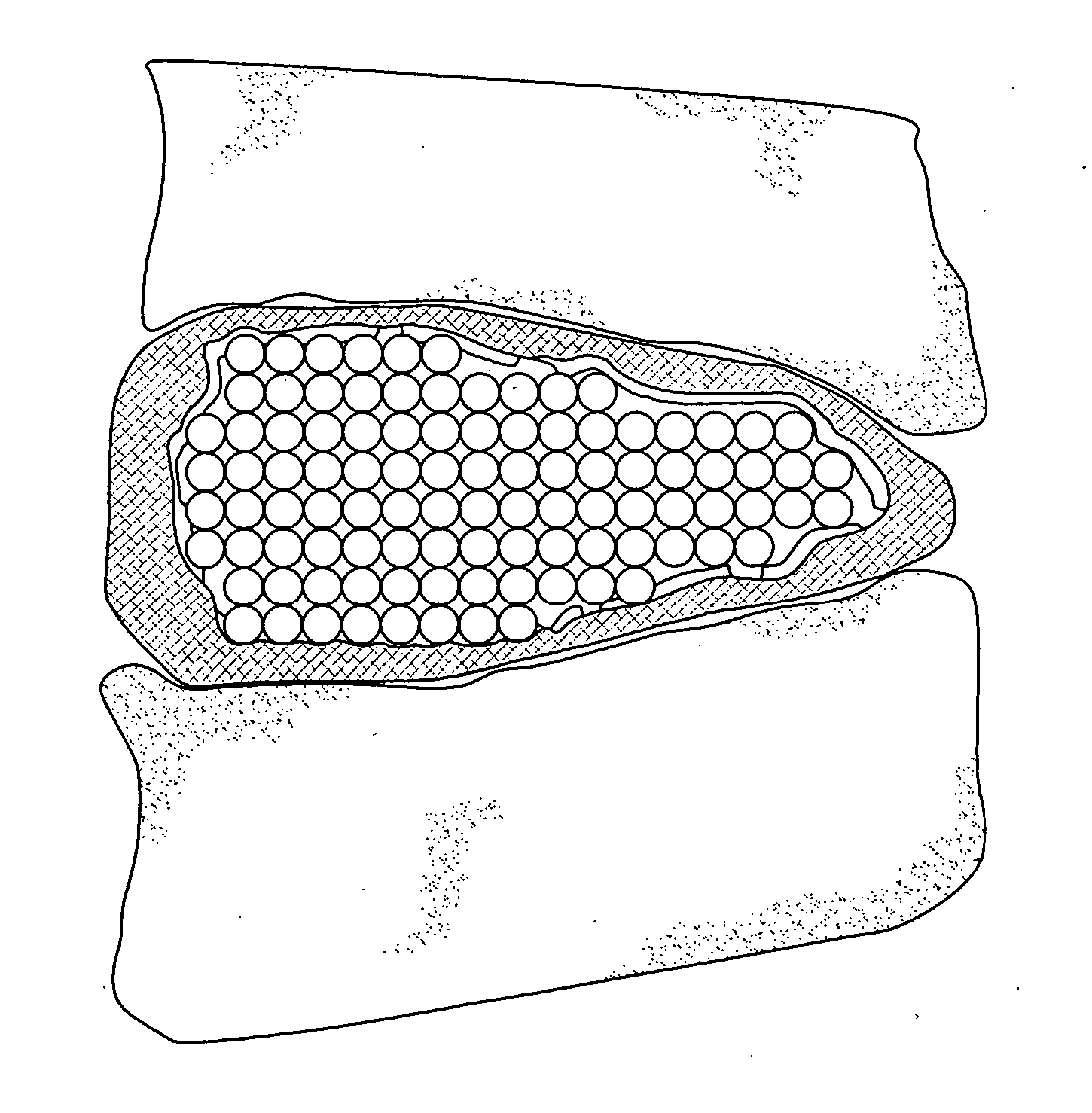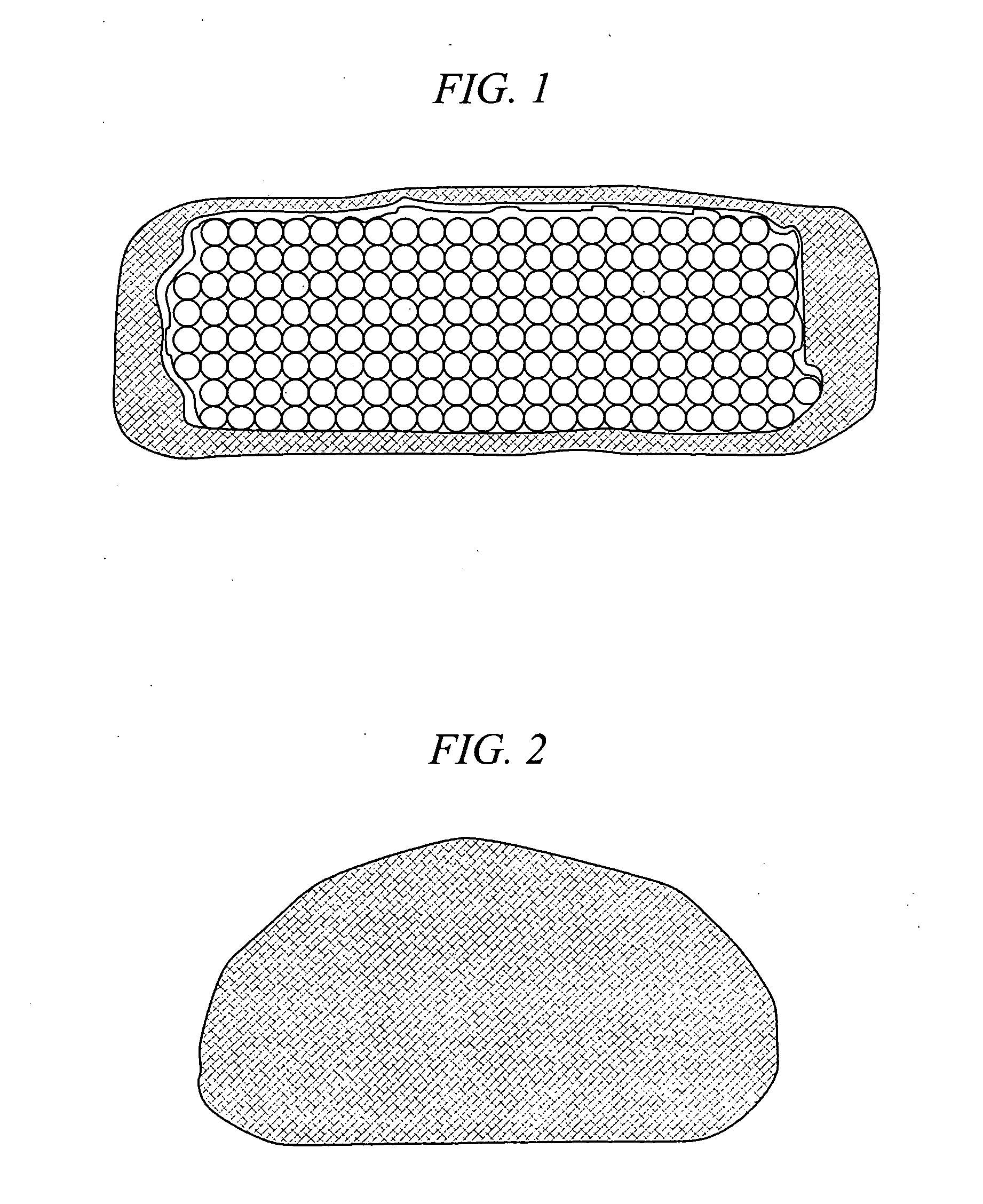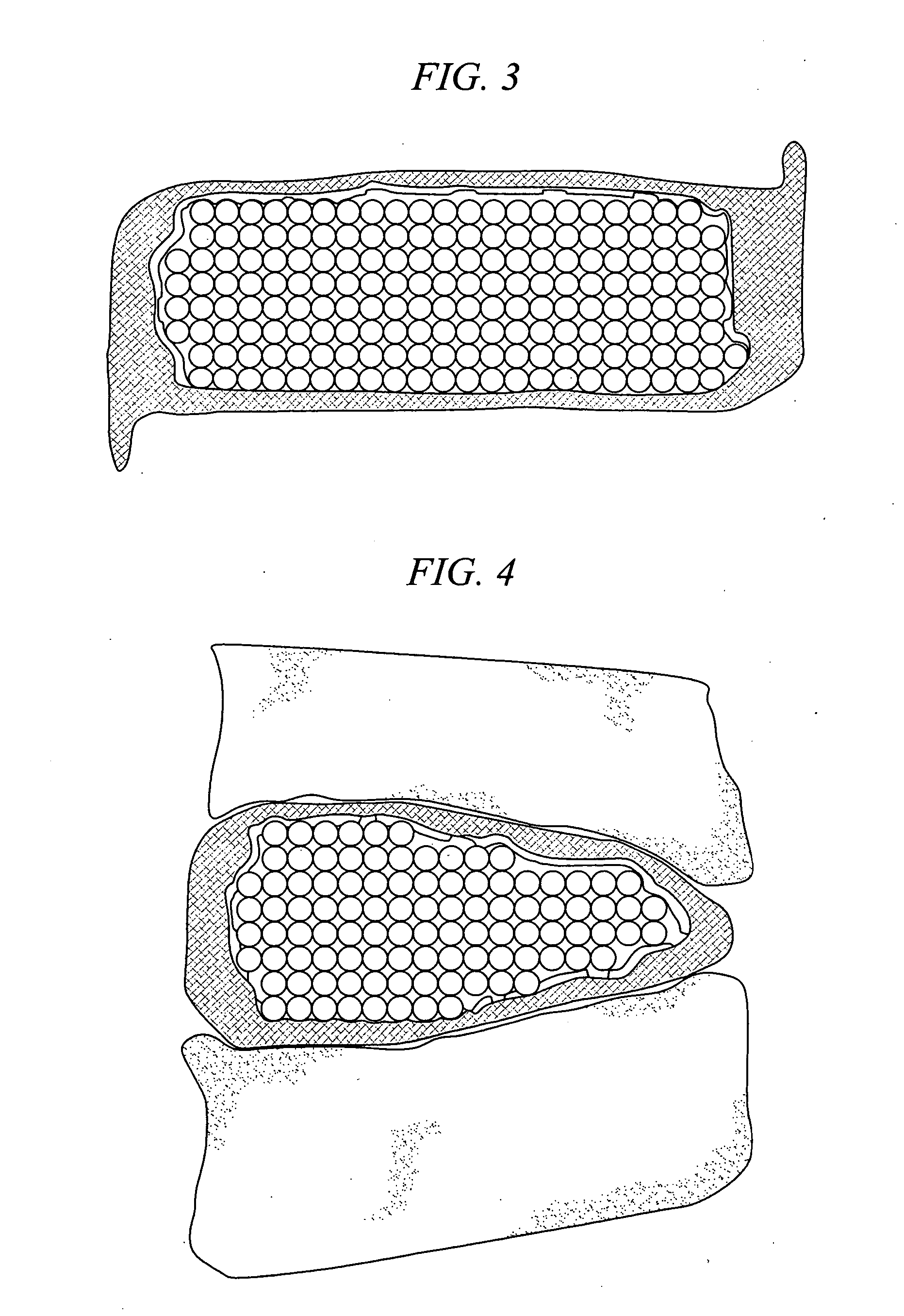Prostheses for spine discs having fusion capability
- Summary
- Abstract
- Description
- Claims
- Application Information
AI Technical Summary
Benefits of technology
Problems solved by technology
Method used
Image
Examples
Embodiment Construction
[0026] The present invention is a medical device and method. The device consists of two implantable parts the two parts of the device will be implanted in a disc space after discectomy. The surgical approach can be posterior or anterior, although posterolateral is preferred. The device will be of a size to be implanted in a minimally invasive or endoscopic manner. The device is dry prior to implantation and fits into a space approximately 9 mm by 12 mm long. After positioning in the disc space and possible use of initial fixation, the device is saturated with normal saline and the incision closed. Post operatively, the hydraulic element absorbs water and swells to several times their dry size. The hydraulic element may be added before, during or after the operation. Addition of hydraulic element to one of the two devices may be made to provide asymmetry for correction of spine deformities, such as scoliosis.
[0027] With reference to FIG. 1 and FIG. 2, in accordance with one embodime...
PUM
| Property | Measurement | Unit |
|---|---|---|
| Volume | aaaaa | aaaaa |
| Time | aaaaa | aaaaa |
| Stiffness | aaaaa | aaaaa |
Abstract
Description
Claims
Application Information
 Login to View More
Login to View More - R&D
- Intellectual Property
- Life Sciences
- Materials
- Tech Scout
- Unparalleled Data Quality
- Higher Quality Content
- 60% Fewer Hallucinations
Browse by: Latest US Patents, China's latest patents, Technical Efficacy Thesaurus, Application Domain, Technology Topic, Popular Technical Reports.
© 2025 PatSnap. All rights reserved.Legal|Privacy policy|Modern Slavery Act Transparency Statement|Sitemap|About US| Contact US: help@patsnap.com



